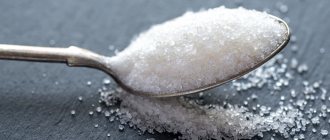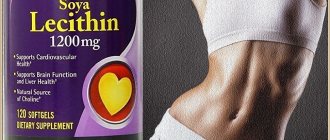There are different types of fats. Species and types
Fats are necessary for the body - that's a fact. The functioning of the endocrine and cardiovascular systems depends on them, but not all fats coming from food are equally healthy and necessary.
Everyone knows that they are divided into animal and vegetable, and there are also liquid and solid. Let's delve a little deeper into the structure of matter and understand where this difference comes from.
Any fat is a mixture of saturated and unsaturated fatty acids. An acid consists of a carbon chain surrounded by hydrogen atoms. So, if a molecule is completely covered with hydrogen atoms, such an acid is called saturated, respectively, if there are not enough of them, it is called unsaturated.
Solid fat is a mixture of acids, most of which are saturated. These fats include animal fats. They are represented by products such as butter and lard.
In liquid fat, unsaturated acids occupy a larger volume. Examples of such a product are all vegetable oils and some animal fats, such as fish.
As you can see, the molecular composition determines the physical properties. Liquid oils with a predominance of unsaturated acids are fluid and have a low melting point. Solids are dense and melt at higher temperatures.
Another type of fat may be found in products - hydrogenated. It is used as a substitute for expensive milk fat. This is a substance of artificial origin, which is obtained mainly from cheap vegetable oils. Under the influence of high temperatures and chemical catalysts, unsaturated acids obtain the missing hydrogen, and liquid fat turns into solid fat, with all its inherent physical properties.
In the food industry, the production of hydrogenated fats, or fats as they are also called, is of great importance. Agriculture is unable to fully satisfy the needs of processing enterprises for animal fats. Therefore, artificial analogues are often used instead.
Trans fats we make ourselves
“Trans fats are also formed in vegetable oil when heated to very high temperatures, for example during frying,” explains the head of the Healthy Nutrition Research Center , professor at Moscow State University. Lomonosov Oleg Medvedev . — The higher the temperature and the longer the temperature treatment takes, the more trans fats are produced in the oil. In terms of their effects on the human body, they are similar to industrially produced trans fats and also cause harm to health.
A group of Palestinian scientists decided to find out how trans fats are formed in different types of fats and oils. The researchers tested ghee, olive and corn oils. In solid cooking fats and ghee, elaidic acid began to form when heated above 120 degrees. Its proportion increased with prolonged exposure to high temperature and reached a peak between 15 and 20 minutes of continuous frying. This harmful acid did not appear in corn and olive oils even when heated to 250 degrees for an hour and a half. Therefore, it is important to use olive oil specifically for frying. Researchers recommend that consumers avoid using margarine for cooking and replace it with liquid vegetable oils."
Article on the topic
Wrong oil. What you need to know when buying cookies, sauces and pies
What are trans fats?
Trans fats are by-products formed as a result of the hydrogenation reaction during the production of lard. When liquid fat is saturated with hydrogen, not all of its molecules acquire the missing atoms. Some of them change their spatial structure, turning into dangerous compounds.
That is, they may not accept hydrogen, but change shape, turning any of their parts in the other direction. And then we can already talk about the appearance of a trans isomer - a substance of a similar composition, but a different structure.
You can often come across another name - “transgenic fats”, but it is not correct. Since here we are not talking about the genome, but only about the structure of the molecule.
Trans fats are spatial isomers of fatty acids, the normal molecules that make up natural fats. Only they have completely different properties, and cannot be called useful in any way.
Trans fats are present in small amounts in natural oils. They are formed as a result of the activity of bacteria inhabiting the stomach of ruminants. Partially passes into meat and milk. From there they get into the product.
In solid milk fat their content ranges from 2 to 8%. While in hydrogenated oils obtained industrially, their share can increase to 67%. It is worth noting that trans fats obtained artificially and naturally have completely different properties.
In factories and in nature
What are trans fats? These are fat molecules with a modified structure. Most of them are formed during high-temperature processing of oil. In industry, this occurs in the process of so-called partial hydrogenation: vegetable oil (sunflower, soybean or any liquid oil) is treated with hydrogen under high pressure with the participation of a catalyst. As a result, solid fat is formed, which contains up to 50% of harmful trans fats. The most common trans fats contain elaidic acid (a trans isomer of oleic acid), which significantly increases the risk of cardiovascular disease.
There are also small amounts of natural trans fats. They are found in meat and milk of ruminants. A miniature chemical factory in their body transforms vegetable fats found in grasses and grains into trans fats. Many scientists believe that the effect of these natural substances on human health is similar to the effect of industrial trans fats. And to minimize their impact, you should eat lean meat and low-fat dairy products.
Meat with lingonberries is ideal. How to fill your shopping basket? More details
History of appearance in nutrition
In the 1890s, the future Nobel laureate P. Sabatier decided to put the hydrogenation reaction into practice. We all already know what came of it. In our country, the first attempt to harden liquid fats was made by the scientist S. Fokin in 1906.
But the German researcher V. Normann went further. He created industrial equipment that made it possible to obtain solid fats from liquid oils, and in 1909 he patented his own production technology. In 1911, he sold his patent to a company that put Procter and Gamble's experience into practice. She created a first-of-its-kind product, a dough improver based on hydrogenated cottonseed oil.
Hardening of fats has found wide application in the food industry. Hydrogenated oils began to be added to foods and semi-finished products to maintain structure and preserve their appearance. Artificial fat, compared to natural fat, has a higher melting point and does not melt outside the refrigerator. It tastes like butter, so it can significantly “ennoble” the product.
Hydrogenation began to be used for more mundane purposes. Thanks to it, the shelf life of perishable products has increased. Since solid fat contains fewer unsaturated molecules, it is difficult to oxidize and therefore does not spoil for a long time. Hydrogenation was used to preserve valuable products such as whale oil.
Industrial trans fats
Trans isomers of fatty acids are formed during the hydrogenation reaction of liquid oils, during which hydrogen atoms are added when double fatty acid molecules in the carbon skeleton are broken. It is important to note that such a reaction is possible only at high temperature (160-180°C), elevated pressure and when pure hydrogen is supplied. Therefore, statements that trans isomers of fatty acids are formed, for example, when frying potatoes look quite strange: atmospheric hydrogen is clearly not enough for the hydrogenation reaction to take place.
Trans fats are found in large quantities in cooking fats, which are used mainly for the production of low-price sweets (candy bars, sweets with fat fillings, etc.). Another potentially dangerous product is everyone’s favorite waffles: trying to reduce production costs, some manufacturers make the fat layer based on cheap cooking fat, which may contain trans fats.
How dangerous are trans fats for the human body?
Trans fats have the ability to replace lipids that are part of the cell membrane, disrupting its structure. The affected cell loses the ability to fully feed and remove harmful substances. Subsequently, it ceases to perform its function. When there are many such cells, it begins to affect the functioning of an organ or even an entire system.
Consumption of trans fats leads to metabolic disorders and the accumulation of toxins.
All this can be the cause of any disease.
The answer to the question “How to remove trans fats from the body?” can be answered immediately – no way. They do not appear on their own. Their disposal is possible only together with the affected cells. All tissues of our body are constantly renewed. Some cells die, others appear. It is only through this process that the body is cleansed over time, provided that dangerous isomers do not enter it again.
What diseases can transgenic fats cause?
In the 1990s, publications began to appear on the impact of trans fats. It was found that consuming products containing such components primarily negatively affects the functioning of the heart and blood vessels.
Trans fats disrupt the balance between “bad” and “good” cholesterol. This equilibrium shifts towards heavy molecules. They are capable of forming conglomerates, which subsequently adhere to the walls of blood vessels and narrow their lumen.
With the accumulation of “bad” cholesterol in the body, the risk of:
- heart attack;
- stroke;
- coronary heart disease;
- atherosclerosis;
- diabetes;
- obesity.
It has been established that in the United States more than 20,000 deaths per year are registered due to diseases caused by eating trans fats.
Some studies show that the presence of these components in the body of the expectant mother can provoke mutations in the fetal genome.
As is known, sex hormones are formed from low molecular weight cholesterol. A shift in balance towards large molecules leads to disruption of the reproductive system, which can ultimately result in infertility.
The accumulation of carcinogens in the body increases the risk of developing cancer, Alzheimer's disease, and depression.
The harm of trans fats
When fat is exposed to oxygen, the molecular structure changes. The natural shape of the molecule is straight (to put it in simple terms), but after hydrogenation it becomes curved. This state is called trans form. Once changed, the fat molecule is no longer able to perform necessary functions in the body.
Molecules of trans fats easily take part in cell metabolism and melt into the place of molecules of unsaturated fatty acids. As a result, favorable conditions arise for the development of certain types of cancer. Also, the presence of large amounts of trans fats in the body causes great harm and leads to increased cholesterol in the blood, blood vessel diseases, and heart disease.
Molecules of dangerous fats disrupt metabolic processes in the body, and also contribute to the development of various diseases and pathologies.
The effect of trans fats on the human body:
- Promote rapid weight gain.
- Reduces immunity.
- They have a bad effect on the functioning of enzymes that take part in neutralizing the body from dangerous chemicals and carcinogens.
- They reduce the amount of sex hormones in men and worsen the quality of sperm.
- Contributes to the development of type 2 diabetes mellitus.
- Negatively affect the development of the fetus during pregnancy. The baby may have a very low birth weight.
- Trans fats reduce the quality of breast milk and enter the baby's body.
- Frequent consumption of trans fats leads to mental retardation.
- These substances contribute to the development of inflammatory processes and allergic reactions.
- Hydrogenated fat contributes to the development of infertility in women.
- Consumption of artificial fats reduces the body's resistance to stress. As a result, depression and premature aging may develop.
- A diet rich in trans fats contributes to the early development of Alzheimer's disease.
People first started talking about the dangers of consuming trans fats in the 70s of the last century. But industry around the world was not ready for global restructuring. Only in 1990, after the results of a study by Dutch scientists were published, this problem was no longer ignored. After publication, a large number of studies were conducted, and they all confirmed the negative effects of trans fats on the human body.
Correlation with obesity
There is an indirect link between excessive consumption of trans fats and obesity. Against the background of cholesterol imbalance, changes occur in the endocrine system. Due to a lack of hormones, the process of lipid utilization is inhibited. Fats begin to be deposited in tissues, which can subsequently lead to obesity.
According to WHO, the number of overweight people has doubled over the past 20 years, and trans fats play an important role in these statistics.
Trans fats and modern children
Modern children spend more and more time outside the home. This directly affects their eating behavior. With this lifestyle, snacking on the go between classes becomes the norm. To compensate for the lack of energy, the child subconsciously strives to eat something high in calories. Advertising also plays a role. Instead of healthy food, he chooses snacks, sweet bars or fast food.
Most of what is sold in fast food restaurants contains hydrogenated oils, and along with them, trans fats. Fast food not only satisfies the need for food, but also causes irreparable harm to health.
Most of the snacks that children love so much: puffed corn, chips, quick breakfasts are replete with trans fats. You need to fight unhealthy eating behavior, first of all, by eradicating the habit of eating on the go.
What foods contain trans fats?
Most often, trans fats can be found in the following products, list:
- any fast food;
- French fries and other deep-fried foods;
- semi-finished products;
- popcorn, chips, crackers;
- cakes;
- margarine;
- store-bought baked goods with margarine;
- mayonnaise and mayonnaise-based sauces.
Before purchasing a questionable product, be sure to look at its ingredients. If you find margarine, as well as hydrogenated and partially hydrogenated oils, it is better to leave such goods on the shelf.
List of foods containing trans fats:
We remind you that trans fats can be found in small amounts in natural products, but in natural oils they have a completely different composition. There are a huge number of trans isomers, but the effect on the body of only some of them has been studied.
The largest amount of harmful oils is found in hard margarines and cooking fat. There their share reaches from 18 to 67%. Below is a list of foods containing trans fats. Once you've read it, you'll have a better idea of what it's all about.
Trans fats in butter
In natural butter, made exclusively from dairy cream, the content of natural trans isomers is in the range of 1.6-6.8%. These are non-artificial trans fats; their effect does not have a detrimental effect on the body.
It is worth paying attention to the labels on the packaging. The product must be called “butter”, consist of dairy cream and have a fat content of 78 to 82%.
Trans fats in vegetable oils
Refined vegetable oil contains less than 1% natural trans fats, the consumption of which is also not dangerous. These oils are useful to consume fresh, adding to salads.
Trans fats in margarine
This category includes the most dangerous products, in which the content of trans fats is particularly high. Most confectionery products (cookies, waffles, cakes, rolls, sweets, etc.) are prepared on the basis of margarines.
On the labels of such products it may be referred to as:
- cooking fat;
- milk fat substitute;
- hydrogenated fat;
- Palm oil;
- mixture of vegetable oils;
- spread
For home use, instead of margarine, it is better to purchase refined vegetable oil for frying, ghee or butter for baking.
Trans fats in mayonnaise
Natural vegetable oil in mayonnaise and any other industrial sauces can be partially or completely replaced with hydrogenated oil, which will provide the product with a long shelf life.
Trans fats in chocolate
In sweet bars, expensive cocoa butter is replaced with low-quality hydrogenated fat to reduce the cost of the product. It also increases the melting point of the tile, preventing it from melting in the heat.
The expression “melts in your mouth, not in your hands” has nothing to do with good chocolate. The real thing should melt in your hands.
"Fast food"
Any semi-finished products are prepared using hardened fats containing trans isomers. Even seemingly simple burger buns are actually not so harmless. As evidence, we can cite the fact that they can be stored for six months. And all thanks to the “nuclear” composition.
Semi-finished meat products and sauces are also protected from spoilage and loss of appearance due to the inclusion of hydrogenated fats.
Deep fried products
Trans fats are formed as a result of frying food in low-quality, unrefined vegetable oil. The harm increases significantly if the frying fat is not changed on time.
Fast food restaurants offer dishes from this category such as:
- French fries;
- donuts;
- nuggets;
- fish fingers;
- deep-fried squid rings.
Other products
What foods contain trans fats besides those listed above? Roasted peanuts and puffed corn can be considered unhealthy foods. Solid vegetable fats are present in sausages, semi-finished products, and ready-made frozen meals.
How to minimize the harm from trans fats?
The main means of prevention is rational nutrition. You should limit your consumption of fast food. When purchasing food, pay attention to the product information on its packaging. Sometimes such information is not available. Therefore, you should not buy products that have been recycled. It is better not to eat butter with a fat content of less than 82.5%.
Refined vegetable oils contain more isomers than unrefined ones, but the danger should not be exaggerated. The trans fat content does not exceed 1%, which is a safe concentration. However, when frying, fatty acids are modified, so it is better to consume baked or boiled foods.
Be sure to read: What are the benefits of fiber: what is it, list of products, how to take it, when not to use it
It is difficult to extract energy from translipids deposited under the skin or in liver cells. Therefore, simple fasting is not effective for losing weight. We need catalysts that help the body process harmful compounds. These are omega 3 and omega 6 essential acids, which are abundant in flaxseed oil, olive oil, and fish oil.
Why are trans fats still used?
It is more correct to say that they do not use trans fats, but hydrogenated fats, since trans isomers are only a by-product of their production. Industrial enterprises do not set out to obtain trans fats. They make solid fats from liquid ones, but due to the low quality of the raw materials, a large number of harmful impurities are formed.
The modern food industry is unlikely to be able to abandon hydrogenated fats. There is a great need for them. These fats cannot be replaced with the same amount of natural solid oils.
There are economic benefits to using margarines. Products with them last longer, keep their shape better, and are cheaper. Therefore, we can only hope that industrialists will begin to take a more careful approach to the selection of raw materials for the production of artificial fats.
Since the 2000s, Europe has been actively fighting the content of trans fats in products at the state level. They are completely prohibited in countries such as Austria, Hungary, Denmark, Switzerland, and Iceland. Europe is gradually moving towards eliminating the use of partially hydrogenated vegetable oils in products, which contain the most dangerous isomers.
In our country there is a GOST, according to which the share of harmful components in solid fats should be limited to 8%. But with the formation of the Customs Union, this document lost its binding nature, since neighboring countries are not ready to fulfill this condition due to the low technical equipment of their food enterprises.
The dangers of trans fats
In developed countries, particularly in the United States, trans fats are consumed in too large quantities. And their effect on the body raises serious concerns.
Affect cholesterol levels
Trans fats increase the amount of “bad” (LDL) cholesterol and decrease the level of “good” (HDL) cholesterol. A study published in the American Journal of Clinical Nutrition shows clear evidence that trans fatty acids increase LDL cholesterol and decrease HDL cholesterol.
Scientists believe that at least 30,000 premature deaths in the United States are associated with excessive consumption of trans fats.
Increases the risk of heart disease
Consuming large amounts of trans fats can increase the risk of heart disease and heart attack. A study from Harvard Medical School in the US, which included controlled and observational studies, found that trans fats from partially hydrogenated oils “negatively affect cardiovascular risk factors and contribute to a significant increase in the risk of coronary heart disease.”
Confirming these findings, a study published in the Pakistan Journal of Medical Sciences states that the high consumption of trans fats in Pakistan may be a major reason for the increasing incidence of cardiovascular diseases. Scientists suggest that choosing fats with low levels of trans fatty acids will help reduce this indicator in southern Asia.
Another study from the journal Molecular Nutrition & Food Research suggests that trans fat consumption is associated with a number of cardiovascular complications, including atherosclerosis.
Increased risk of diabetes
Trans fats have been shown to contribute to weight gain and diabetes. For example, one study published in the New England Journal of Medicine involved more than 84,000 women without heart disease, diabetes or cancer. During a follow-up period of 16 years, scientists recorded 3,300 new cases of type 2 diabetes, which is caused by overweight and obesity. Scientists emphasize that women who consumed high amounts of trans fatty acids had a 40% higher risk of diabetes.
Research from the Wake Forest University School of Medicine in the US has found that trans fats cause abdominal obesity and changes in insulin sensitivity in monkeys. It is possible that a similar pattern is typical for people.
How to reduce your trans fat intake?
To do this, it is necessary to minimize the consumption of ready-made and industrially processed food. Buy fresh, raw, natural foods and cook them yourself.
Heating vegetable oil can also create trans fats. Therefore, it is better to replace such a method of culinary processing of foods as frying with stewing, boiling and baking.











